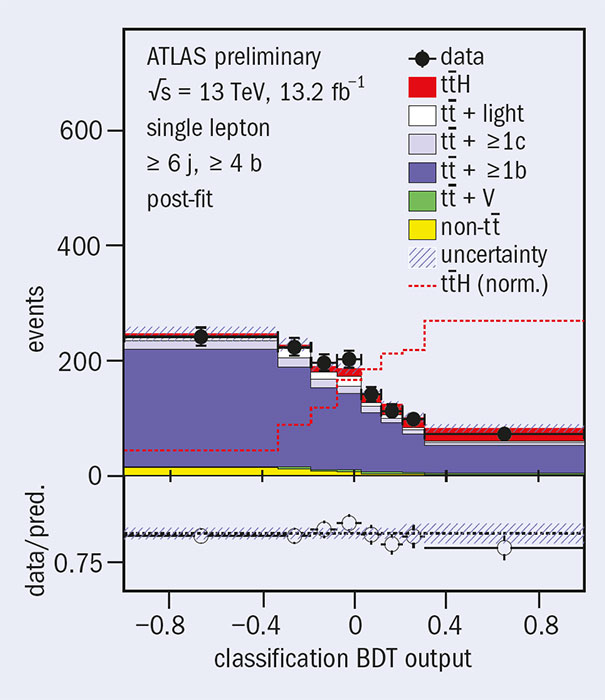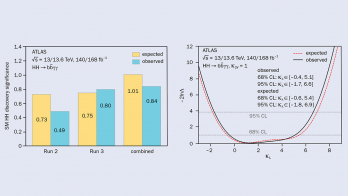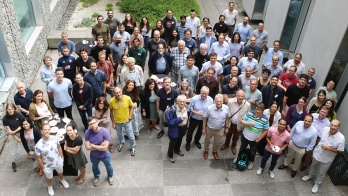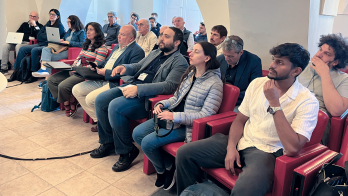
The Higgs boson has been observed via its decays to photons, tau leptons, and Z and W bosons, which has allowed ATLAS to glean much information about the particle’s properties. So far, these properties agree with the predictions of the Standard Model (SM). However, there are several aspects of the Higgs boson that are still largely unexplored, most notably the coupling of the Higgs boson to quarks. The two heaviest quarks, the bottom and top, are particularly interesting because they have the largest couplings to the Higgs boson. If these couplings differ from the SM predictions, it could provide a first hint of new physics.
Observing the coupling of the Higgs boson to these two quark flavours is challenging, however. Despite the Higgs decaying to a pair of bottom quarks around 58% of the time, this decay has not yet been observed because such decays manifest themselves as jets in the detector and this signature is overwhelmed by the SM production of multi-jets. As a result, physicists search for this decay by looking for the production of the Higgs in association with a vector boson (W or Z) or a top-quark pair. The additional particles have a more distinctive decay signature, but this comes at the price of a much lower signal-production rate.
Regarding the top quark, the only way to directly measure the coupling of the Higgs to the top quark at the LHC is to study events where a Higgs is produced in association with a top-quark pair. Like the situation with bottom quarks, this process has not yet been observed. Indeed, even with the more distinct decays, the background processes that mimic these signals are large, complex and difficult to model. In both the top and bottom production channels, the backgrounds are controlled by using advanced machine-learning techniques to separate signal events from background (see figure).
We should finally observe both of these processes at a high statistical significance later during Run 2,
Both searches have now been carried out by ATLAS with data from LHC Run 2, revealing a sensitivity to the Higgs boson couplings to top and bottom quarks that is competitive with searches at Run 1. However, they are still not precise enough to identify if there are any deviations from SM behaviour. With further improvements to the analyses, better understanding of the backgrounds and the unprecedented performance of the LHC, we should finally observe both of these processes at a high statistical significance later during Run 2. This will tell us if the Higgs boson is indeed responsible for the masses of the quarks as predicted in the SM, or if there is new physics beyond it.
Further reading
ATLAS Collaboration 2016 ATLAS-CONF-2016-058.
ATLAS Collaboration 2016 ATLAS-CONF-2016-068.
ATLAS Collaboration 2016 ATLAS-CONF-2016-080.
ATLAS Collaboration 2016 ATLAS-CONF-2016-091.








